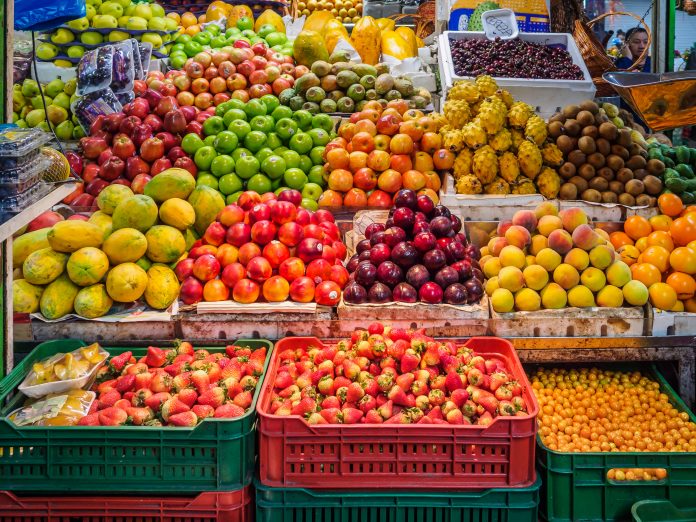It’s a great time to get into the eCommerce food and beverage industry. Revenue from the eCommerce food and beverage industry in the United States rose to $34.2 billion in 2021, marking an increase of around $8.2 billion compared to 2020.
But shipping food and beverage products can be a challenge for many companies. If your goods arrive damaged or the container is open, your products will need to be discarded or they could spread germs and diseases to consumers. Like all goods, the cost of shipping food depends on the weight, distance traveled and the estimated timeframe. It costs, on average, $2.24 per mile to transport food less than 100 miles and $1.46 per mile to transport food less than 1,000 miles. You may also need to pay for refrigeration and insulating packaging to store your goods at the proper temperature.
Learn how to properly ship your food and beverage products so your products don’t go to waste.
Ship Large Quantities of Dry Goods in Super Sacks
Food suppliers often use FIBC bulk bags, or super sacks, to safely and quickly move large quantities of dry goods, such as grains, flour, livestock feed, beans and other essential raw ingredients. These bags can typically store up to 1,000 lbs. to 3,000 lbs. They are made of woven low-density polyethylene, a thermoplastic that can stretch without breaking or ripping apart.
Some bags come with closed tops that will insulate your goods from the elements, including airborne particles, dust and dirt. You can attach your bags to a pallet or carry them from the top using a forklift. Some bags come with attached drawstrings that will support the weight of the bag. You can then release the product into a food processor or feed trough.
Use Plastic Totes and Containers for Food Products and Cold Storage
Plastic is the preferred container in the food and beverage industry. Most plastic containers are non-toxic and safe to use with food. The material is lightweight and durable to help you save money on shipping without putting your products at risk. Unlike wood or metal, plastic won’t warp or rust when exposed to moisture. It also won’t shrink or expand in different temperatures, which is essential when you are storing your goods in a refrigerated container or freezer. Plastic is also more sanitary than wood. You can easily clean plastic containers and surfaces using food-safe cleaners, while wood can spread dirt and debris that can contaminate your products.
Use a plastic pallet container or tote to move and store your food and beverage products. They are designed to fit onto a plastic pallet for efficient loading/unloading.
Use Smart Packaging to Improve Quality Control
You can never be too careful when shipping food and beverage products. All products should be insulated from the outside world to prevent contamination, leaks and spoilage. You need to make sure every product that gets delivered is safe for human consumption, while minimizing any potential losses. Many companies are using smart packaging to do just that. These packages come with smart tags or sensors that will send you notifications in real-time if someone tampers with one of your packages or it leaks by accident. You can then notify your business partners so they can dispose of these items before they reach the market. Smart thermostats can track the temperature of your cold storage products as they move through the supply chain. Your team will get an alert if the temperature product drops below a certain threshold so they can dispose of them if needed.
Consider using dry ice to keep your packages and containers cold. It’s safe to touch food, but keep it separated from your food products to prevent contamination.
Fill your insulated and refrigerated containers until they are full to prevent warm air from slipping inside.
Preparing for a Long Commute
Regardless of what type of food you’re shipping, it’s best to prepare for the worst and hope for the best. Supply chain disruptions are making it increasingly difficult to predict when your products will arrive at their destination. If you are shipping cold or perishable items with a set shelf life, time is of the essence, so consider choosing the fastest shipping route or method. Do your best to extend the life of your products by storing them in durable containers that can withstand moderate turbulence. Make sure the container seals properly to restrict airflow. The lid shouldn’t pop open during transit, even if the container slides or flips over.
Use containers with dividers and sleeves to keep your products in one place. Fill them to the brim without squeezing your products together. Use stackable containers to separate your products by rows so they don’t get squished during the trip.
Focus on Sustainability
Most food and beverage shipping materials end up in the trash. Even recyclable materials like plastic and glass wind up in landfills. Do your best to limit waste by utilizing reusable packaging materials. Attach RFID trackers to your containers and set up a return system so you can use them again. Just wash them off and inspect them for damage before putting them back in rotation.
At the end of the day, your team will have to dispose of single-use shipping materials like plastic wrap and recycle cardboard boxes. These activities can be time-consuming and they aren’t even making you money. Disposable materials will also clutter your facility, which can make it harder for your workers to do their jobs.
Use these techniques to safely ship your food and beverage products in today’s eCommerce market.







